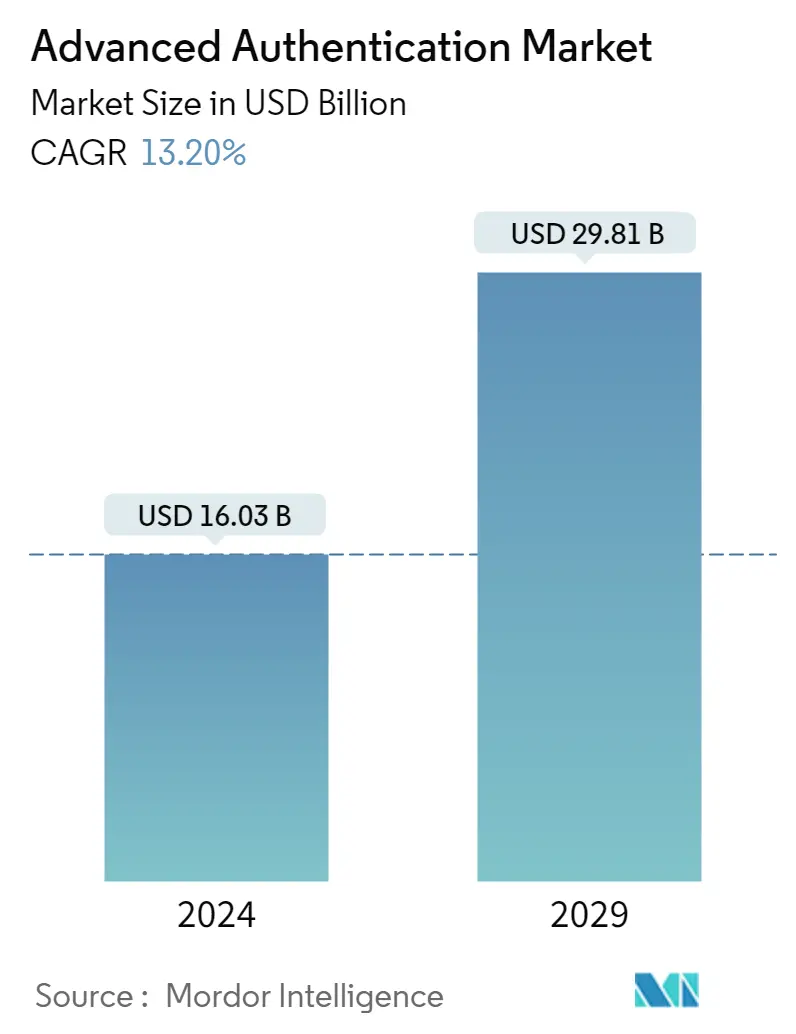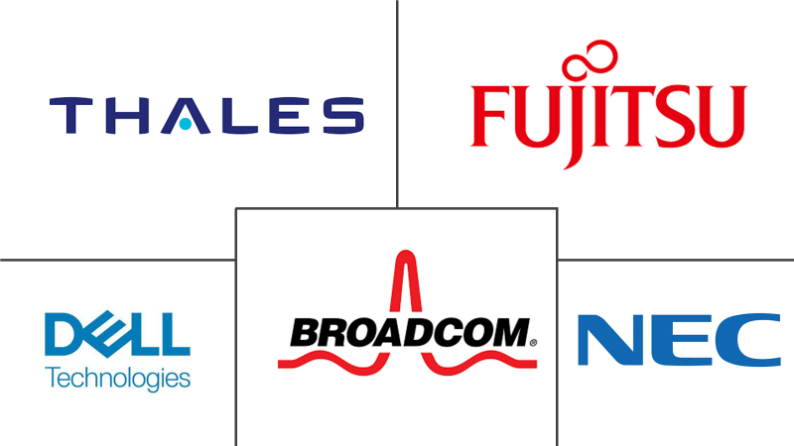Market Size of Advanced Authentication Industry

| Study Period | 2019 - 2029 |
| Market Size (2024) | USD 16.03 Billion |
| Market Size (2029) | USD 29.81 Billion |
| CAGR (2024 - 2029) | 13.20 % |
| Fastest Growing Market | Asia Pacific |
| Largest Market | North America |
Major Players
*Disclaimer: Major Players sorted in no particular order |
Need a report that reflects how COVID-19 has impacted this market and its growth?
Advanced Authentication Market Analysis
The Advanced Authentication Market size is estimated at USD 16.03 billion in 2024, and is expected to reach USD 29.81 billion by 2029, growing at a CAGR of 13.20% during the forecast period (2024-2029).
Factors driving the Advanced Authentication Market include increased adoption of mobility, and enterprises are feeling pressure to enable employees, partners, and other stakeholders to access more sensitive information. Security threats have been increasing continuously. Hackers are finding new ways to steal data, while new viruses are being developed to steal sensitive information from enterprises and individual users. With most users now preferring to perform transactions online, it becomes imperative for the organization to deploy authentication solutions that help ensure convenient and secure access.
- Every organization needs a reliable security system to confirm the truth of something or a person's identity. Too often, the basic or traditional password method is broken, copied, or shared, putting data at risk of being stolen or hacked.
- The increased adoption of mobility is the other factor contributing to the growth of the market for advanced authentication solutions. Enterprises are feeling pressure to enable employees, partners, and other stakeholders to access more sensitive information from anywhere and on any device. This makes advanced authentication systems a critical aspect of an enterprise's organizational strategy.
- Vendors of advanced authentication solutions are developing and improving their existing authentication methods. Some of the most commonly used authentication methods are biometrics, smartcards, tokens, and several others for mitigating security risks.
- Further, companies are auto-enabling two-step verification for users for enhanced security. For instance, in February 2022, Google enabled two-step verification for more than 150 million users after announcing the effort last year and noting in a press release that the action had caused the number of accounts hijacked by password theft to decrease by 50%. The initiative has also involved requiring two million YouTube users to enable it.
- Cybercriminals have boosted their attacks at a rapid pace amid COVID-19, thereby exploiting the uncertainty and fear caused by the unstable social and economic situation. Interpol looked at how COVID-19 affected cybercrime and found that the main targets had changed from individuals and small businesses to large corporations, critical infrastructure, and governments.
Also, according to a POLITICO analysis, nearly 50 million people in the United States had their sensitive health data breached last year, a threefold increase in the last three years. Last year, these kinds of problems were reported by healthcare providers and insurers in every state except South Dakota. This increased the need for advanced authentication over the next few years.
